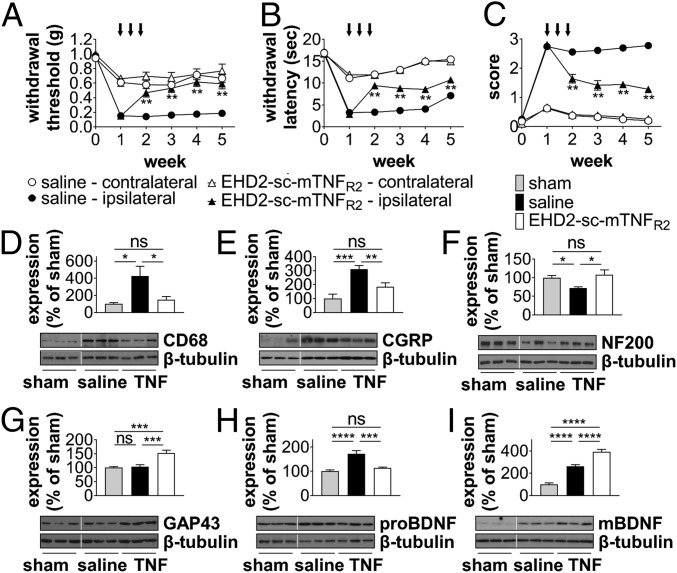Fig. 3.
TNFR2 agonism promotes recovery from neuropathic pain. WT mice underwent CCI or sham injury at week 0. Mechanical allodynia (A), thermal hyperalgesia (B), and cold allodynia (C) were determined over a period of 5 wpi. On days 7, 10, and 13, mice were treated with saline or EHD2-sc-mTNFR2 (10 mg/kg) via i.p. injection (black arrows, mechanical allodynia: n = 19 each group, thermal hyperalgesia/cold allodynia: n = 12 each group) **P < 0.01 saline vs. EHD2-sc-mTNFR2 ipsilateral paw. (D–I) Expression of CD68, CGRP, NF200, GAP43, proBDNF, and mBDNF in the spinal cord was quantified by Western blot analysis 5 wpi. Shown are representative blots and the mean ± SEM of optical density of each protein normalized to β-tubulin, percentage of protein expression of sham (sham: n = 6, saline/EHD2-sc-mTNFR2 [TNF]: n = 8). *P < 0.05; **P < 0.01; ***P < 0.001; ns, not significant.

